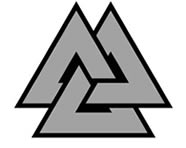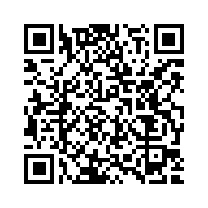
Author : Seem Mark
Title : A new american acupuncture Acupuncture Osteopathy The myofascial release of the bodymind's holding patterns
Year : 1993
Link download : Seem_Mark_-_A_new_american_acupuncture_Acupuncture_Osteopathy.zip
Preface. Acupuncture pain management should be a routine part of any acupuncture student's training, and the public at large should be right in assuming, as they do, that acupuncturists are highly effective in the treatment of pain and its various dysfunctions. The American Medical Association itself has listed acupuncture as an appropriate adjunctive therapy for pain management, and the treatment of recurrent and chronic pain has been discussed in the medical literature as one of our most pressing and costly health care concerns. Yet many acupuncturists freely admit that, while they can treat acute pain effectively and rapidly, chronic pain more often than not fails to improve in any significant fashion using the currently dominant acupuncture methodology. When teaching at various schools and conferences from the West Coast to England, one of the most frequent questions I am asked revolves around the treatment of chronic pain, and I am often struck by the lack of training in this area at most Western acupuncture schools. This even began to happen at the school I founded and still direct, the Tri-State Institute of Traditional Chinese Acupuncture. Several years ago, I stepped back from regular clinical supervision of my students. At that time, I was preoccupied with my work for the National Council of Acupuncture Schools and Colleges ( NCASC) and the National Commission for the Certification of Acupuncturists (NCCA). The chief clinical supervisor to whom I turned over my clinical duties had recently returned from extensive post-graduate training in the People's Republic of China ( PRC). Therefore, I naively felt I was leaving our third -year clinical interns in good hands. Nonetheless, I scheduled myself to do clinical supervision every three months so that I could still check on our student interns' development. At my first such clinical supervision, 1 began to feci very uneasy. A number of interns asked to sec me in the conference area to discuss the patients they were treating. Typically, they gave me a detailed explanation of what the patient was suffering from and their acupuncture diagnosis and treatment plan which they wanted me to approve. On the one hand, it all sounded very professional. On the other, I was disturbed by what I was hearing. A few hours into the day, I started telling students that, until I saw the patients for myself, I had no idea if their diagnoses and treatment plans were appropriate. I then started going from treatment cubicle to treatment cubicle evaluating their patients. That is when I realized Our students had no idea of how to touch the bodies of their patients to directly assess the status of these patients' meridian system. Whereas I diagnose and treat based primarily on palpation of strategic acupuncture points and meridians to determine where qi is stagnant, these students were only palpating the radial artery pulse, looking at the tongue, and asking questions without otherwise touching their patients' bodies. 1 was appalled, and it took me quite a while to realize that the fault lay in the TCM , internal, herbal medicine perspective our supervisor had brought back, wholesale and uncritically, from the PRC. At first I became angry over the pervasive influence TCM has had on American acupuncture. Over the last eight years or so, this style of acupuncture has insinuated itself into every American acupuncture school curriculum and served as the focus of the NCCA examination. I believe this style ignores the complexity of the acupuncture meridian system which is the basis of the French acupuncture I had originally learned and was, in turn, attempting to teach to my students, In my experience, once one has had too great a taste of TCM acupuncture with its heady logic, facile abstractions, and even more facile repetitive point combinations, a hands-on, meridian-based approach often seems inferior. As I continued to clarify my ideas about and experience of acupuncture, it became clear to me that a hands -on approach emphasizing palpation of constricted areas of the body is fundamental in the practice of meridian acupuncture. That is when I urged my faculty, a few of whom disagreed strongly, to bring in Kiiko Matsumoto. Kiiko Matsumoto is one of the main teachers of Japanese meridian acupuncture in the United States. She had been teaching occasional weekend workshops for us, but now I wanted to make her a regular clinical supervisor. The faculty critical of this plan felt it would confuse students by introducing them to yet another system. This group felt that TCM should be the focus of our curriculum. I argued, however, that Kiiko's Japanese meridian acupuncture would instill a clinical pragmatism in our training which was lacking in TCM acupuncture. It would also show our students that there are many different options for treating from a meridian acupuncture perspective, and that palpation is central in such an approach. After several years in this fashion, I rejoined the clinical faculty on a regular basis and, after we brought in other senior supervisors trained in yet other acupuncture styles, I became less angry at TCM acupuncture. Within this more dispassionate space. I have been able to continue to refine my analysis of and differentiation between TCM and meridian-based acupuncture. I have continued to study and practice French, Vietnamese, and Japanese meridian-based acupuncture systems and have integrated these with Western research and practice concerning trigger points. Thus I have developed my own style of acupuncture which emphasizes the immediate release of areas of palpable constriction using a combination of distal points selected on the basis of meridian theory and local points selected by touch. ...

Demolins Edmond - L'éducation nouvelle
Auteur : Demolins Edmond Ouvrage : L'éducation nouvelle Année : 1898 Lien de téléchargement :...














